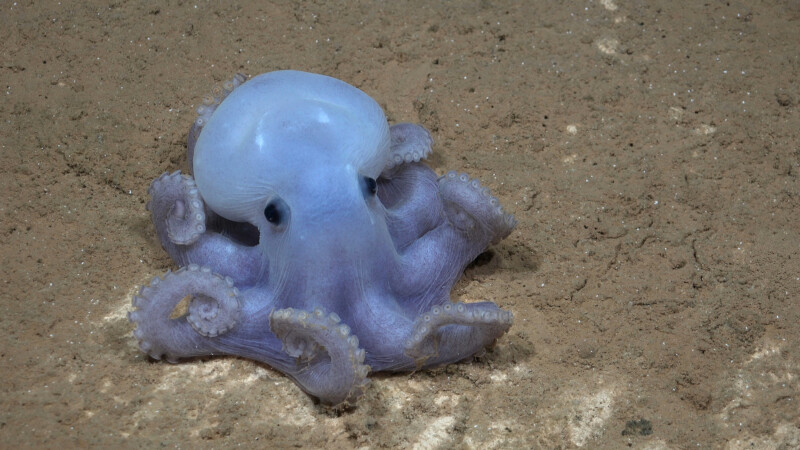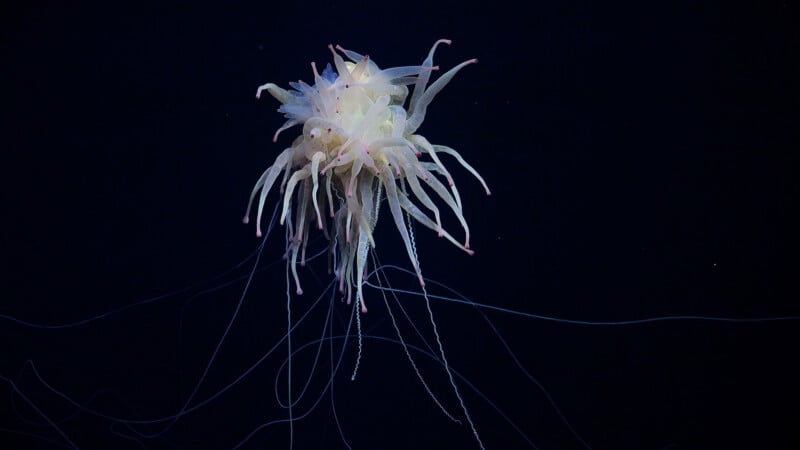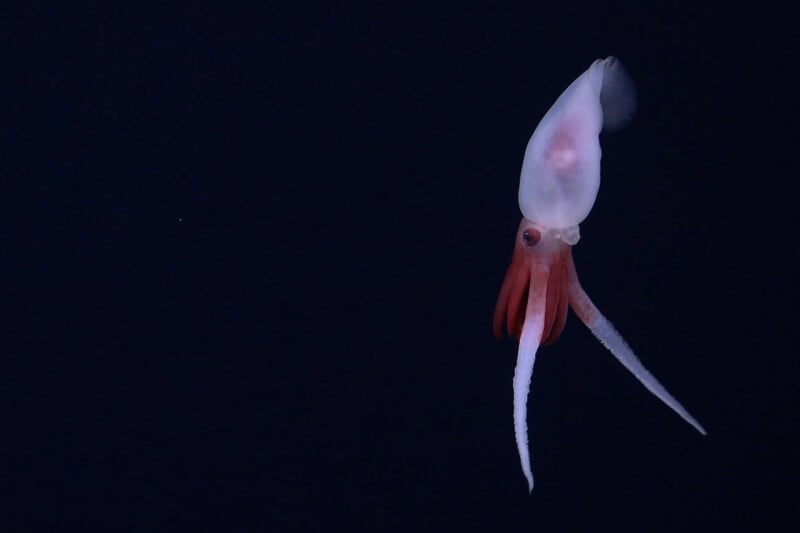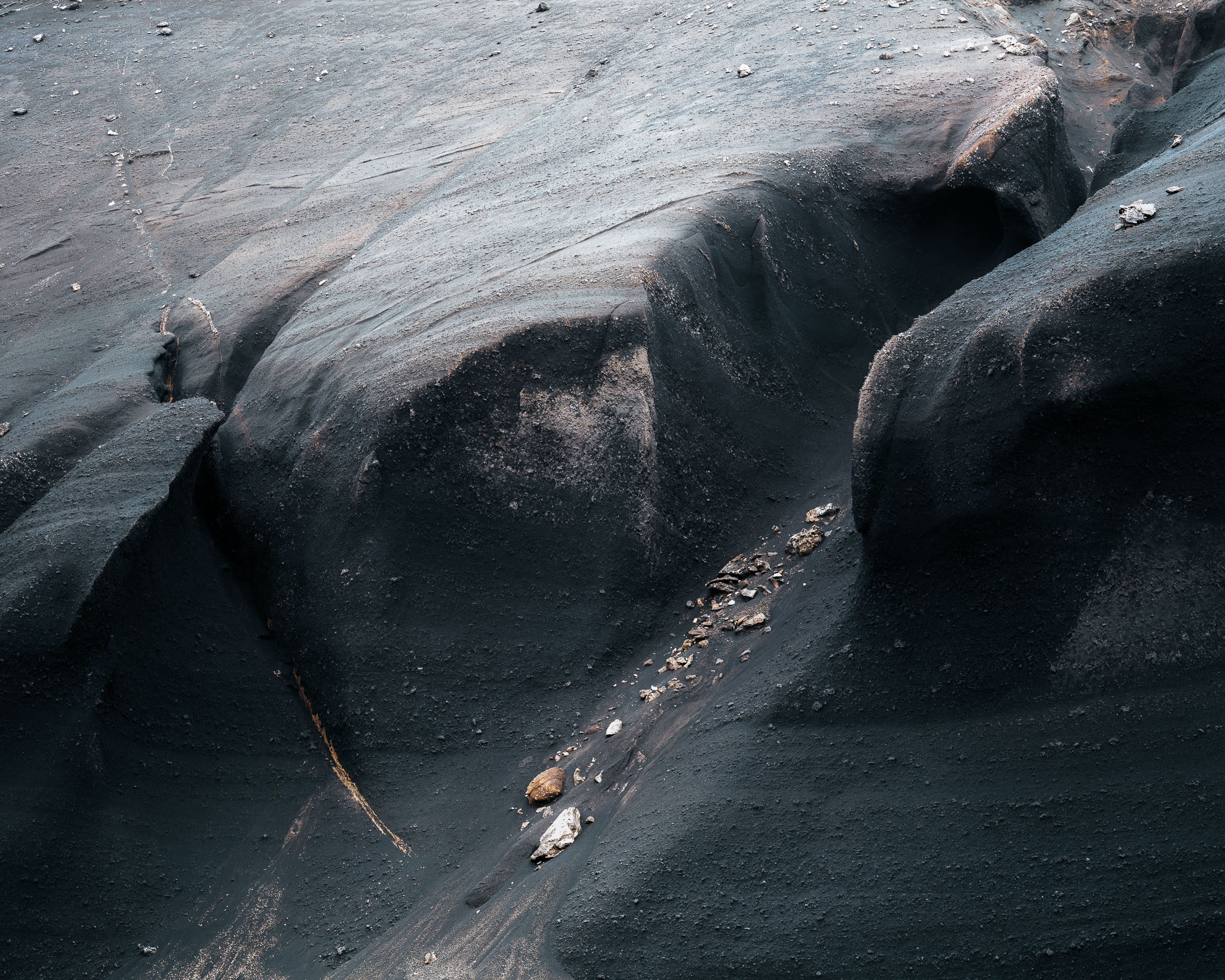 This is the first time this rare octopus species informally named the “Casper octopus” has been seen in the Southern Pacific Ocean.
This is the first time this rare octopus species informally named the “Casper octopus” has been seen in the Southern Pacific Ocean.Scientists have photographed 20 never-before-seen species that were discovered during a deep sea expedition and captured the first-ever footage of a rare squid.
A team of oceanographers led by Schmidt Ocean Institute discovered and mapped a new seamount on the Nazca Ridge in international waters, 900 miles off the coast of Chile.
 A rarely seen Bathyphysa conifera, commonly known as a “flying spaghetti monster” was documented.
A rarely seen Bathyphysa conifera, commonly known as a “flying spaghetti monster” was documented.The seamount is 1.9 miles (3,109 meters) tall and part of an underwater mountain range that is home to rare species.
Using an underwater robot, the team explored one of the mountain’s ridges. The scientists were able to uncover and photograph 20 new deep-sea species on their most recent expedition.
 This is a still from the first-ever footage of a live Promachoteuthis squid.
This is a still from the first-ever footage of a live Promachoteuthis squid.Using an underwater robot, the oceanographers also filmed a rare Promachoteuthis squid living among the mountain — the first time the creature was ever seen alive.
It is the first-ever footage of a live Promachoteuthis squid, a genus so rare that scientists only know of three species based on specimens collected in the late 1800s. In fact, researchers have only been able to study the genus based on dead specimens.
They also encountered the ghostly white octopus dubbed “Casper Octopus,” marking the first recorded sighting of this eight-legged creature in the southern Pacific. Since it has never been captured, it remains without an official scientific name.
Numerous corals, deep-sea sponges, fish, and even two rare Bathyphysa siphonophores — also known as flying spaghetti monsters for their string-like appearance — were also photographed.
Bathyphysa siphonophore (AKA flying spaghetti monster) spotted in the #NazcaHighSeas! This is a carnivorous colonial organism composed of multicellular units; each zooid performs a job — reproduction, digestion, floatation, & body positioning. Talk about teamwork! pic.twitter.com/MAkZ0OAZBw
— Schmidt Ocean (@SchmidtOcean) August 26, 2024
The 20 newly discovered species will be cataloged in the Ocean Census, a bold international initiative aimed at documenting previously unknown marine life, with a goal of identifying 100,000 new species over the next decade.
This is the third expedition this year to the Nazca Ridge conducted on the Schmidt Ocean Institute’s R/V Falkor.
Before this year’s Schmidt Ocean Institute expeditions, 1,019 species were known to inhabit this part of the Pacific Ocean. That number has now risen to over 1,300.
“The seamounts of the Southeastern Pacific host remarkable biological diversity, with species found nowhere else to date,” Professor Alex David Rogers, Science Director of Ocean Census, says in a statement.
“The work our taxonomists have conducted aboard Falkor (too), supported by Schmidt Ocean Institute team, will significantly enhance our understanding of the distribution of remarkable life forms on these underwater mountains, including several that have never before been mapped or seen by human eyes.”
According to CNN, the Nazca Ridge could soon become the world’s first protected marine area in deep, international waters as a result of new United Nations treaty adopted in 2023.
Image credits: All photos by ROV SuBastian/Schmidt Ocean Institute.



/cdn.vox-cdn.com/uploads/chorus_asset/file/25242409/20230608_Palworld_Screenshot_02.png)



 English (US) ·
English (US) ·